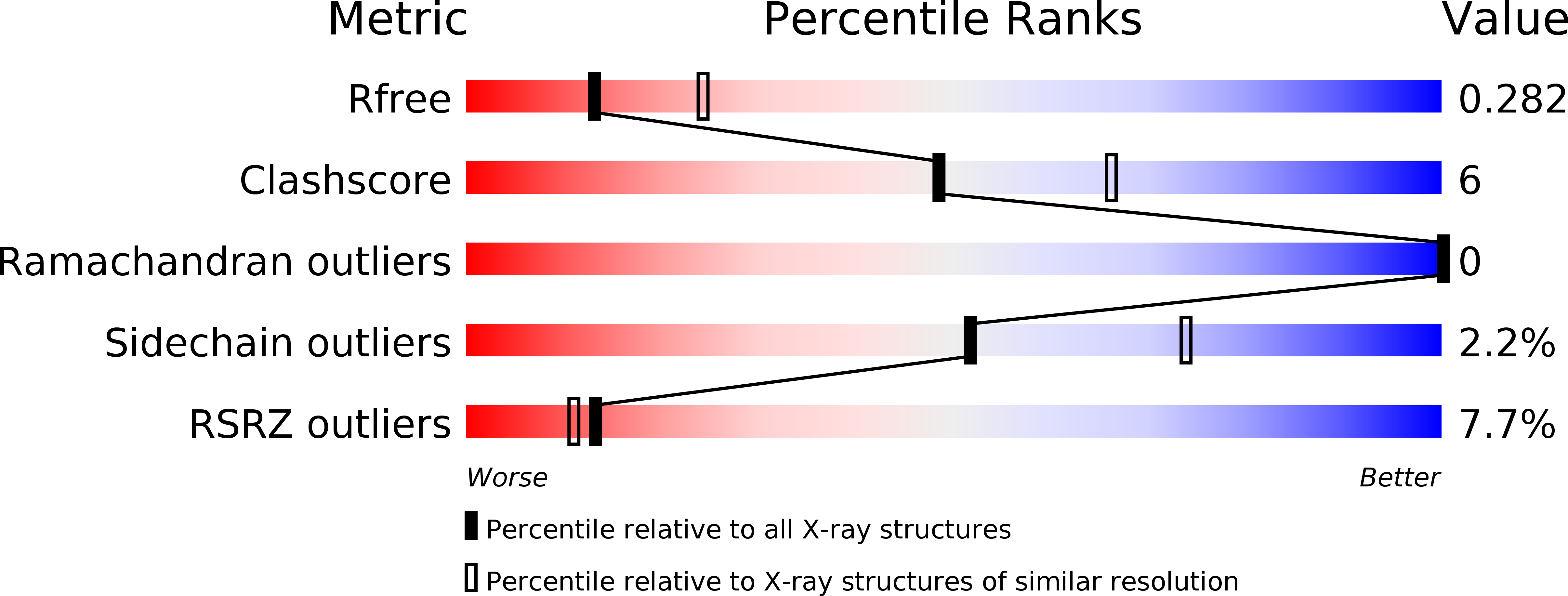Structure of a Pestivirus Envelope Glycoprotein E2 Clarifies its Role in Cell Entry.
El Omari, K., Iourin, O., Harlos, K., Grimes, J.M., Stuart, D.I.(2013) Cell Rep 3: 30
- PubMed: 23273918
- DOI: https://doi.org/10.1016/j.celrep.2012.12.001
- Primary Citation of Related Structures:
2YQ2, 2YQ3 - PubMed Abstract:
Enveloped viruses have developed various adroit mechanisms to invade their host cells. This process requires one or more viral envelope glycoprotein to achieve cell attachment and membrane fusion. Members of the Flaviviridae such as flaviviruses possess only one envelope glycoprotein, E, whereas pestiviruses and hepacivirus encode two glycoproteins, E1 and E2. Although E2 is involved in cell attachment, it has been unclear which protein is responsible for membrane fusion. We report the crystal structures of the homodimeric glycoprotein E2 from the pestivirus bovine viral diarrhea virus 1 (BVDV1) at both neutral and low pH. Unexpectedly, BVDV1 E2 does not have a class II fusion protein fold, and at low pH the N-terminal domain is disordered, similarly to the intermediate postfusion state of E2 from sindbis virus, an alphavirus. Our results suggest that the pestivirus and possibly the hepacivirus fusion machinery are unlike any previously observed.
Organizational Affiliation:
Division of Structural Biology, The Wellcome Trust Center for Human Genetics, University of Oxford, Headington, Oxford OX3 7BN, UK.



















